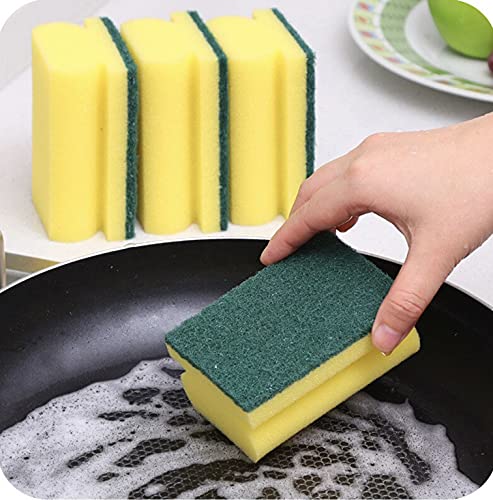Proper Storage: Keeping Your Sponge Clean and Germ-Free
When it comes to the best way to store a sponge, cleanliness and hygiene should be a top priority. A sponge is an essential tool used in households and commercial settings for various cleaning purposes, but if not stored properly, it can become a breeding ground for bacteria and unpleasant odors.
The Dangers of Improper Sponge Storage
An improperly stored sponge can harbor harmful bacteria such as E. coli, Salmonella, and Staphylococcus aureus, which can cause food poisoning and other infections. These germs can multiply quickly in a damp environment, and if the sponge is left wet and in contact with other surfaces, it can transfer those bacteria to different areas of your home, increasing the risk of contamination.
Best Practices for Sponge Storage
To ensure that your sponge remains clean and germ-free, here are some best practices for proper sponge storage:
Let it Dry
After each use, it’s crucial to thoroughly rinse your sponge with hot water to remove any leftover debris and soap. Squeeze out as much water as possible and place it in a well-ventilated area to air dry completely. Avoid leaving it in a damp or enclosed space, as this can promote the growth of bacteria and mold.
Keep it Separate
It’s essential to store your sponge away from other cleaning tools, such as scrub brushes or dishcloths, to prevent cross-contamination. The different textures and materials of these cleaning tools can create a favorable environment for bacteria to thrive. Consider using a designated sponge holder or keeping your sponge in a separate compartment in your cleaning caddy.
Use a Sponge Holder
A sponge holder is a useful accessory that helps keep your sponge elevated and allows airflow to circulate around it, promoting faster drying. Choose a holder made of materials that are resistant to moisture and easy to clean, such as stainless steel or plastic. Avoid holders with closed compartments that can trap moisture.
Sanitize Regularly
Regularly sanitizing your sponge is essential to kill germs and remove any residual odors. There are several methods you can use to sanitize your sponge, such as microwaving it for a short period or soaking it in a bleach solution. Follow the manufacturer’s instructions or consult reliable sources for guidance on the best sanitization methods for your specific type of sponge.
Replace When Necessary
Even with proper storage and maintenance, sponges have a lifespan. Over time, the sponge’s surface can degrade, making it less effective at cleaning and more prone to bacteria growth. It’s recommended to replace your sponge every few weeks or when you notice signs of wear and tear.
By following these best practices for proper sponge storage, you can maintain a clean and hygienic kitchen or cleaning routine while reducing the risk of bacterial contamination. Remember, a clean sponge is an effective sponge!






